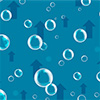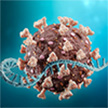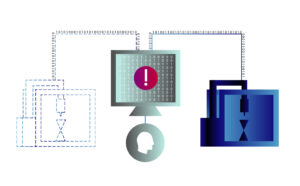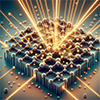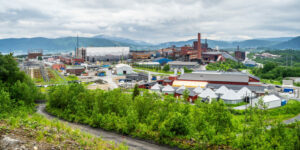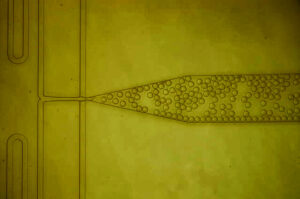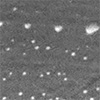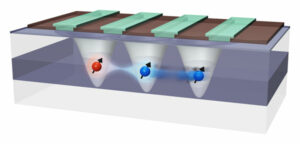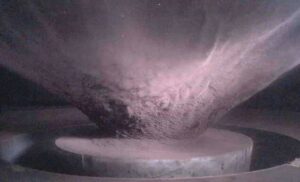| Jan 24, 2024 |
|
(Nanowerk News) Fresh research into the physics of vibrating nanobubbles reveals that they do not heat up as much as previously thought (Nano Letters, "Thermal Oscillations of Nanobubbles").
|
|
Vibrating nanobubbles have surprising uses as ultrasound contrast agents in cancer diagnosis. They can also be forced to collapse - destroying nearby microscopic contaminants - for waste-water treatment and surface cleaning of delicate microfluidic devices.
|
|
The stiffness of a nanobubble as it vibrates is strongly related to their internal temperature, and being able to understand this relationship leads to better predictions of their size in experiments and their design in these applications.
|
|
Using ARCHER2, the UK’s national leading supercomputer hosted at the University of Edinburgh, the research found two distinct nanoscale effects that influence bubbles with diameters less than one thousandth of a millimetre across.
|
|
The high density of the gas inside the bubbles leads to molecules bouncing off each other more frequently, resulting in an increased bubble stiffness, even at constant temperatures.
|
|
Another effect from the nanoscale dimensions of the bubble was the emergence of an insulating layer around the bubble, which reduced the ability for the bubble to dissipate the internal heat, which modified the way they vibrated. |
|
The study revealed the true pressure and temperature distributions inside nanobubbles, using high-detail molecular dynamics simulations, and found a better model to describe their dynamics.
|
|
Study lead, Dr Duncan Dockar, RAEng Research Fellow, School of Engineering, University of Edinburgh, said: “The results of these findings will allow us to employ nanobubbles for better efficiencies in water-treatment processes and precise cleaning of microelectronic devices.
|
|
“This work also highlights the roles of bubbles in future nanotechnologies, which have been seeing a lot interest in recent years. Our upcoming research focuses on the unusual nanoscale effects that influence these bubbles, which are not common in everyday engineering.”
|
- SEO Powered Content & PR Distribution. Get Amplified Today.
- PlatoData.Network Vertical Generative Ai. Empower Yourself. Access Here.
- PlatoAiStream. Web3 Intelligence. Knowledge Amplified. Access Here.
- PlatoESG. Carbon, CleanTech, Energy, Environment, Solar, Waste Management. Access Here.
- PlatoHealth. Biotech and Clinical Trials Intelligence. Access Here.
- Source: https://www.nanowerk.com/nanotechnology-news3/newsid=64501.php
